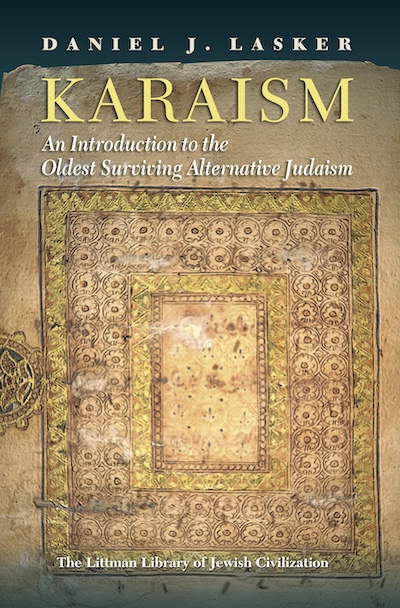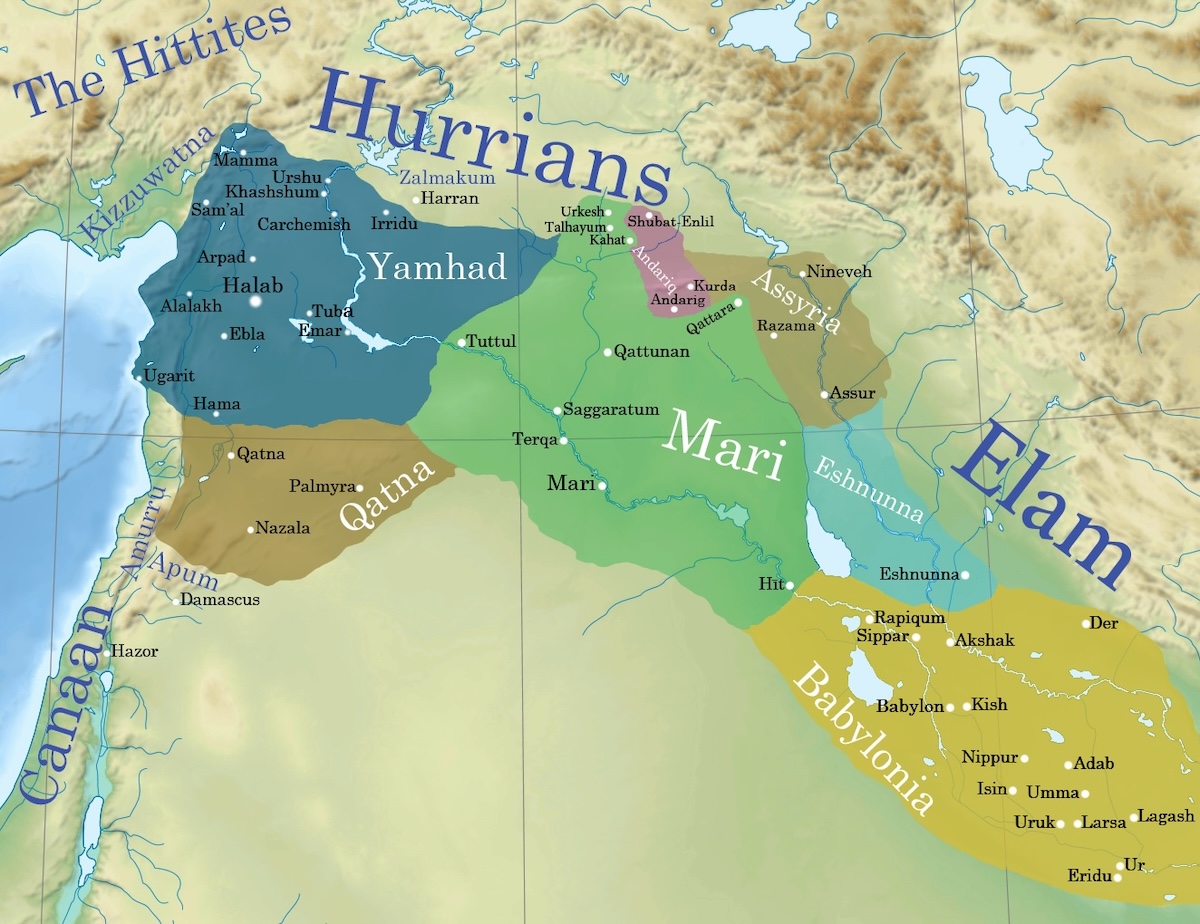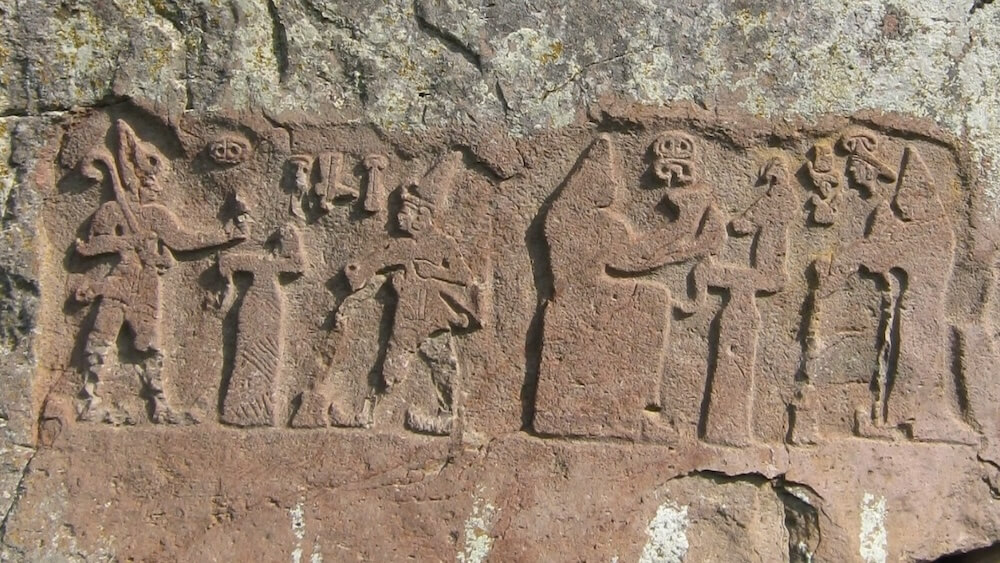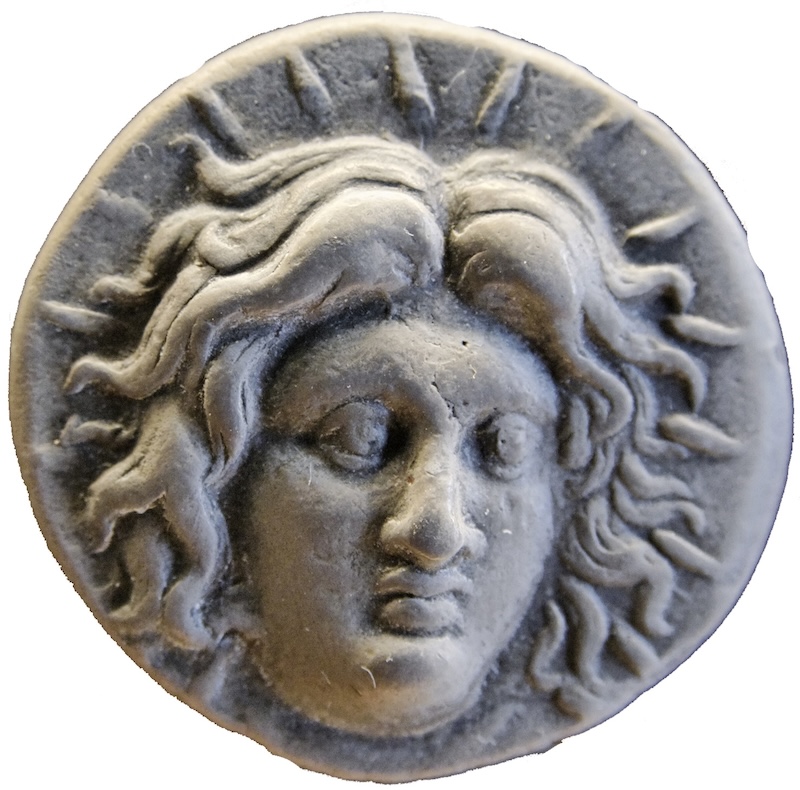
What is Karaism and Are There Still Karaites?
august 2024 | Vol. 12.8
By Daniel J. Lasker
Anyone familiar with a typical synagogue would be surprised by this photograph. Men are wearing skullcaps and prayer shawls. The ark is in the front of the synagogue with a representation of the Ten Commandments above it. In front of the ark is a raised platform, on which there is a reader’s table. A seven-branched menorah is visible in the background, and Hebrew quotations are quite prominent. Yet, unlike the synagogues with which most people are familiar, there are no chairs and the worshippers are sitting on the floor, some of them resting on their knees with the legs under them. If it were possible to examine the prayer book, one would find a totally unfamiliar order of the service. Indeed, this is no ordinary synagogue: it is the oldest one in Jerusalem and it belongs to the Karaites. Editor’s note: image was removed in response to DMAC takedown request.
Although many people are aware that Karaism is a non-rabbinic form of Judaism, they often have more misinformation about this important Jewish movement than accurate historical knowledge. For instance, the eighth-century Anan ben David, is usually considered the founder of Karaism, acting out of personal pique because he was not appointed Exilarch (civil head of the Jewish community) in Iraq. In fact, he founded a group called Ananites and Anan was only later appropriated by the Karaite movement, which itself seems to have begun in the ninth century. Changes in Karaism through the centuries are usually ignored, and the close social and cultural ties between Karaites and Rabbanites (followers of rabbinic Judaism) are unknown.
Many histories of Judaism ignored the important role Karaites played in Jewish intellectual achievements, such as their contributions to biblical exegesis, Hebrew language studies, and theology. One often sees references to “Jews” and “Karaites” rather than to “Rabbanite Jews” and “Karaite Jews.” Although Eastern European Karaites were generally spared during the Holocaust since they claimed that they were not Jews, the complete split between the communities occurred only in the early twentieth century. Meanwhile Karaites in the Islamic world, most notably those in Egypt, continued to see themselves, and were seen by others, as part and parcel of the Jewish People. There are still Karaite Jews to this day, and Karaism is the longest surviving alternative form of Judaism.

Photograph of Abraham Firkovich, late 1800s. Public Domain. Courtesy National Library of Russia.
The study of Karaism has progressed greatly in the past few decades. Although the discoveries of the Cairo Geniza in 1897 and the Dead Sea Scrolls (which may or may not be related to Karaism) in 1947 stimulated research of this form of Judaism, it is the opening up of the libraries of the Former Soviet Union which has been a major spur for Karaite studies. The nineteenth-century Karaite Abraham Firkovich, a colorful figure known for his vigorous defense of Karaism even if he felt it required invention of an imagined history and the forgery of manuscripts and tombstones, was a great collector of Karaite treatises, and he sold his collections to the Russian Imperial Library in St. Petersburg.
For many years, these books, and other repositories of books and manuscripts, were unavailable to the scholarly world; now they are once again accessible. The last few decades have witnessed the production of many important studies of Karaism, from its origins in the Islamic Middle East, through the major centers in Christian Byzantium and selected areas of Eastern Europe, to the contemporary Karaite community.
Despite this progress in Karaite studies, there has been no one introduction to Karaite Judaism which covers the whole range of Karaite history and intellectual achievements in the larger context of the Jewish People. My new book, Karaism. An Introduction to the Longest Surviving Alternative Judaism, fills that gap in the literature. It begins with the thorny question of Karaite origins and how they relate to trends in Judaism going back to the Second Temple as well as to the Islamic environment in which Karaism emerged. It then treats the major periods in Karaite history: the Golden Age in the Land of Israel (ninth to eleventh centuries); the transformation of diaspora Karaism in Byzantium (eleventh to sixteenth centuries); the flourishing of Karaites in Eastern Europe until they eventually broke away from the Jewish People and survived the Holocaust (fifteenth-twentieth centuries); and the present day Karaite communities in Israel and the Bay Area of California. A full description of Karaite religious practices, and how they differ from Rabbanite procedures, is provided, along with the principles of the Karaite religion. In addition, Karaite accomplishments in the fields of theology, biblical exegesis, polemics, historiography and linguistics are summarized. Finally, the likelihood of Karaite continuity after 1200 years is evaluated.

Karaism, An Introduction to the Oldest Surviving Alternative Judaism. Book by the Author.
People are often surprised to hear that there still are Karaites in the world. At most, they number perhaps 50,000, or less than half a percent of world Jewry. The largest community is in Israel with maybe up to 40,000 adherents, most of whom are of Egyptian origin.
They are organized as “Universal Karaite Judaism,” with a separate religious court that determines their own calendar (which differs slightly but significantly from the Rabbanite calendar) and manages Karaite marriage and divorce law. Their official status in Israel has never been determined legally, but they have a type of de facto recognition. In the past few years, with the transition from an Egyptian-born leadership to a native Israeli one, and with greater economic security, the community has worked on strengthening its institutions and maintaining a separate Karaite Israeli identity. A major part of that effort is the modern Karaite Heritage Center in Jerusalem.
No one can foresee the future of Karaism, but it is much too early to eulogize a movement which has survived 1200 years of adversity as a small minority. Meeting the challenges of life in Israel is just the latest stage in the long and outstanding history of Karaite Judaism.
Daniel J. Lasker is Professor Emeritus in the Department of Jewish Thought at Ben-Gurion University of the Negev.
How to cite this article
Lasker, D. J. 2022. “What is Karaism and Are There Still Karaites?” The Ancient Near East Today 10.8. Accessed at: https://anetoday.org/lasker-karaism-karaites/.
Want to learn more?

A Failed Coup: The Assassination of Sennacherib and the Assyrian Civil War of 681 BC

The Amorites: Rethinking Approaches to Corporate Identity in Antiquity



Post a comment